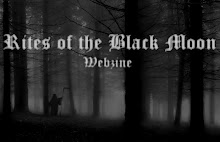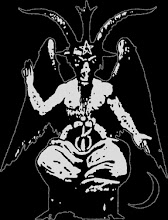
Sabbat's first full-length album, Envenom, was released on Evil Records in March 1991. This record was a long time coming, especially when considering the fact that the band formed in the summer of 1983. It is amazing to think about the fact that one of the best records from the First Wave of Black Metal was only unleashed a short time before the Second Wave was to begin, in full. To put things into perspective, bands such as Bathory, Sodom and Hellhammer had yet to release anything of note around the time Sabbat formed. However, in the time that it took for them to give birth to their first L.P., those bands had all moved on to other musical styles. This came during the dismal period where Mayhem was the sole bearer of the black flame in Norway, just a few weeks before Dead's suicide. The album title, Envenom, is quite appropriate, as this seems to be the logical evolution of Venom's sound, had they not abandoned their path.
The material present on this record covers a lot of ground. There is an occult feeling mixed into several of the songs, book-ended by the intro and outro and including tracks like "Devil Worship" and "King of Hell". In fact, these two may be the most evil and possessed songs on the whole album, with the latter a mid-paced beast that seems to have influenced Watain early on. The majority of the L.P. is not as dark as these tracks, being more dominated by old school guitar riffs that show a lot of inspiration from the classic works of Venom and Mercyful Fate. It is odd that these bands were kind of ignored, as bands like Darkthrone preferred to pick up from where Bathory and Hellhammer / Celtic Frost left off. The songwriting does a great job of mixing the band's old school influences, which have always been integral to their sound, with their own style and interpretation. Elizaveat takes his cues from guitarists such as Mantas and the Shermann / Denner combination, mixing thrash-heavy riffs with incredibly well thought-out solos. While there are a few mid-paced riffs that possess a strong doom feeling, most of the album is comprised of faster playing, though not always at blistering speeds. Gezol's vocals are much more harsh than on most of Sabbat's previous releases, which helps the atmosphere maintain a consistent level of darkness and seriousness, with the exception of the hideous track known as "Carcassvoice", which is just painful to get through. One of the best things about Envenom is that, no matter how black things become, it still remains very Metal. The memorable riffs and haunting guitar solos found here surpass any of the keyboard nonsense that would emerge a few years later.
The overall sound is very much in line with that of the period during which the band formed and began to flourish. The production is good... for a release from 1985. Produced by the members of Sabbat, themselves, Envenom remains true to its '80s roots. Everything is clear enough to be heard, yet all of the instruments blend together to create a very cohesive whole, rather than each one standing out from the rest. The guitar has enough fuzz and distortion to suit the songwriting, though the ominous rumble of the bass helps much more than one might think. This is a throwback to the days when Cronos would bludgeon listeners with his massive bass sound. That said, the guitars are very much the focus of this L.P. The drumming is kind of there, loud enough to be counted, but rather flat and unassuming. This is great, as it prevents the percussion from taking any attention away from that which is important. The vocals, often multi-tracked, rise up from the murky depths just enough to properly torment the listener, but never so much as to overshadow the music, itself.
For a record of such high quality, Envenom is quite obscure when compared to others from the same period. While many seem to think that Black Metal died out in the mid-'80s and was resurrected with bands such as Darkthrone and Immortal, the truth is that there were a decent number of groups that kept the flame burning throughout the dark times of the late '80s / early '90s, with Sabbat being one of the oldest. This album is absolutely essential and highly recommended for any Black Metal fan, period.
The material present on this record covers a lot of ground. There is an occult feeling mixed into several of the songs, book-ended by the intro and outro and including tracks like "Devil Worship" and "King of Hell". In fact, these two may be the most evil and possessed songs on the whole album, with the latter a mid-paced beast that seems to have influenced Watain early on. The majority of the L.P. is not as dark as these tracks, being more dominated by old school guitar riffs that show a lot of inspiration from the classic works of Venom and Mercyful Fate. It is odd that these bands were kind of ignored, as bands like Darkthrone preferred to pick up from where Bathory and Hellhammer / Celtic Frost left off. The songwriting does a great job of mixing the band's old school influences, which have always been integral to their sound, with their own style and interpretation. Elizaveat takes his cues from guitarists such as Mantas and the Shermann / Denner combination, mixing thrash-heavy riffs with incredibly well thought-out solos. While there are a few mid-paced riffs that possess a strong doom feeling, most of the album is comprised of faster playing, though not always at blistering speeds. Gezol's vocals are much more harsh than on most of Sabbat's previous releases, which helps the atmosphere maintain a consistent level of darkness and seriousness, with the exception of the hideous track known as "Carcassvoice", which is just painful to get through. One of the best things about Envenom is that, no matter how black things become, it still remains very Metal. The memorable riffs and haunting guitar solos found here surpass any of the keyboard nonsense that would emerge a few years later.
The overall sound is very much in line with that of the period during which the band formed and began to flourish. The production is good... for a release from 1985. Produced by the members of Sabbat, themselves, Envenom remains true to its '80s roots. Everything is clear enough to be heard, yet all of the instruments blend together to create a very cohesive whole, rather than each one standing out from the rest. The guitar has enough fuzz and distortion to suit the songwriting, though the ominous rumble of the bass helps much more than one might think. This is a throwback to the days when Cronos would bludgeon listeners with his massive bass sound. That said, the guitars are very much the focus of this L.P. The drumming is kind of there, loud enough to be counted, but rather flat and unassuming. This is great, as it prevents the percussion from taking any attention away from that which is important. The vocals, often multi-tracked, rise up from the murky depths just enough to properly torment the listener, but never so much as to overshadow the music, itself.
For a record of such high quality, Envenom is quite obscure when compared to others from the same period. While many seem to think that Black Metal died out in the mid-'80s and was resurrected with bands such as Darkthrone and Immortal, the truth is that there were a decent number of groups that kept the flame burning throughout the dark times of the late '80s / early '90s, with Sabbat being one of the oldest. This album is absolutely essential and highly recommended for any Black Metal fan, period.
.jpg)





















